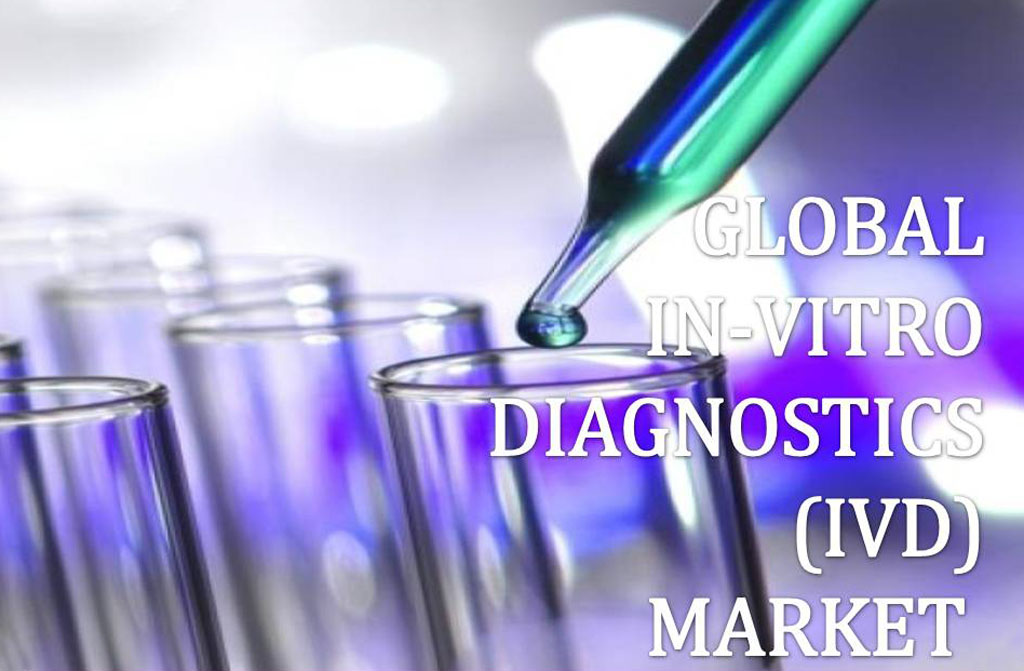Top Five In Vitro Diagnostic Trends of 2016
By LabMedica International staff writers
Posted on 20 Dec 2016
Companies in the global in vitro diagnostic (IVD) market which is currently worth USD 60.5 billion are being affected by various trends such as hospital consolidation, China’s increasingly important role in product launch decisions, service test markets, new small clinic targets, and mergers & acquisitions.Posted on 20 Dec 2016
These are the latest findings of Kalorama Information, (New York, NY, USA), an independent medical market research firm, which has identified the top five trends in the global IVD market for 2016.

Image: Research has identified the top five IVD market trends for 2016 (Photo courtesy of Slidestoc).
The global IVD market is responding to the trend of healthcare consolidation with a renewed approach to core lab markets and automation systems aimed at the big accounts. Integrated health networks are increasingly demanding greater centralization of diagnostic testing to streamline workflows and direct better healthcare information to professionals.
Meanwhile, in the last five years, China has strengthened its position as an IVD market close behind the US, European Union, and Japan. Apart from obtaining the US Food and Drug Administration’s (FDA) approval or European CE marking, receiving approval from the China FDA (CFDA) has now become the next significant milestone in product development for a number of IVD companies. What is particularly interesting about the significant growth of the Chinese IVD market is the growing importance of its cancer diagnostics space. Although advanced cancer testing is generally not associated with middle-income countries, China’s strong research abilities in sequencing and globally significant patient populations in the urban markets have given rise to huge opportunities for overseas IVD companies. Within the Chinese cancer diagnostics market, the highest activity is being seen in the area of next-generation sequencing (NGS), driven mainly by demand for non-invasive prenatal testing (NIPT). China’s clinical sequencer base currently includes over 40 hospitals in the region and other testing institutions catering to about 70 other hospitals and clinical clients. Cancer testing is the second-largest clinical application of NGS in China.
Another emerging trend affecting the global IVD market is the increasing penetration of major cancer-focused US LDT companies in the EU market. However, the rising profile of LDTs in the EU could restrict the growth opportunities for the region’s molecular cancer diagnostics market. The increased availability of CE-marked molecular cancer kits has failed to translate into a strong growth in the IVD market segment. Nevertheless, the return of political stability to the region, increasingly favorable economic scenario, and growing demand for advanced LDT services, which in turn, is boosting sales of related reagents and instrumentation, has led to an improved outlook for the regional market. Molecular cancer diagnostics, which is a high-growth market segment globally, is expected to grow by about just 4% in the EU owing to market maturity (as compared to the ROW markets) and limitations on reimbursement (in comparison to the US market which has a more diversified payer system).
Another notable trend is the sharp increase in urgent care centers (UCCs) numbering more than 10,000 in the US, as well as in retail clinics (1,200+), which has created a need for systems capable of dealing with the workflows generally associated with such clinics. Convenient hours are a key strength of UCCs as they offer walk-in, extended hour access for acute illness and injury care that is either beyond the scope or availability of the typical primary care practice. In comparison to traditional physicians, UCCs have a different type of office setting comprising of procedure rooms for lacerations and fractures, radiology department for providing X-ray services, and a laboratory in some cases. On the other hand, retail clinics are comparatively smaller than UCCs, provide limited services, and are usually manned by a single practitioner.
The global IVD market also continued to witness brisk merger activity in 2016. Some deals have allowed larger companies to acquire new technologies, though a shift towards globalization of IVD knowledge is clearly evident.
Related Links:
Kalorama Information














